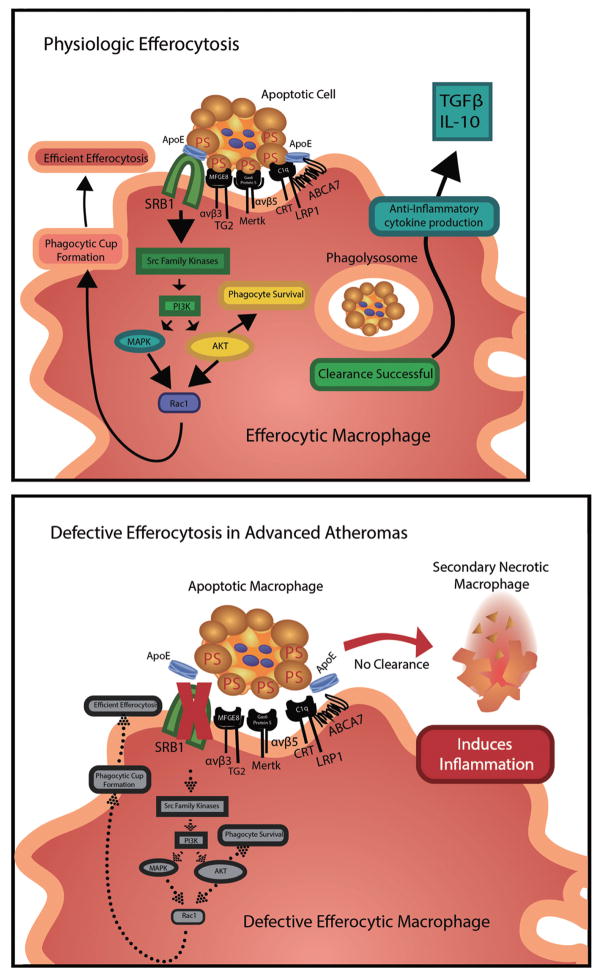Figure 4.
Physiological macrophage efferocytosis in atherosclerotic lesions involves a number of efferocytotic receptors, bridging molecules, and apoptotic cell ligands. The efferocytosis receptor complexes that affect atherosclerosis development in mice include SR-BI, TG2-αvβ3, MERTK-αvβ5, and LRP1-CRT-ABCA7. SR-BI interaction with apoptotic cell phosphatidylserine (PS) stimulates Src membrane recruitment and phosphorylation, leading to downstream activation of phosphoinositide 3-kinase and Rac1 to promote formation of the phagocytic cup and efficient efferocytosis. Efferocytosis by SR-BI and the other receptors stimulates anti-inflammatory signaling and promotes phagocyte survival. In advanced atherosclerotic lesions, enhanced oxidative stress and inflammation leads to defective efferocytosis, resulting in secondary necrotic death, heightened inflammation, and cytotoxicity.

